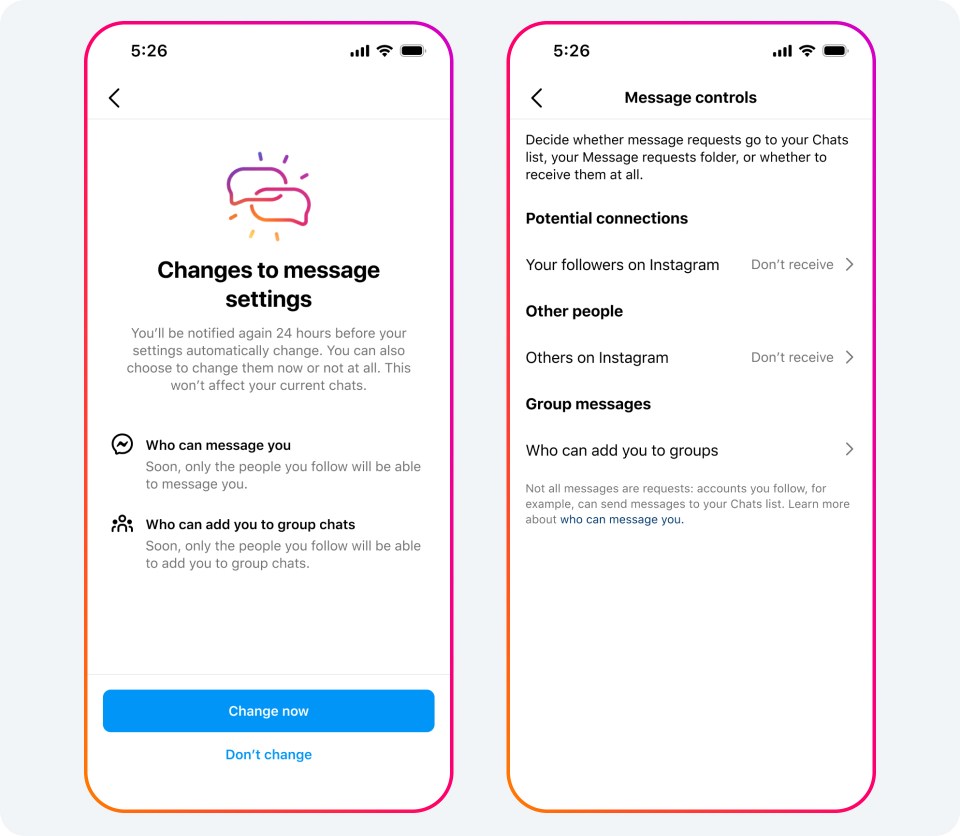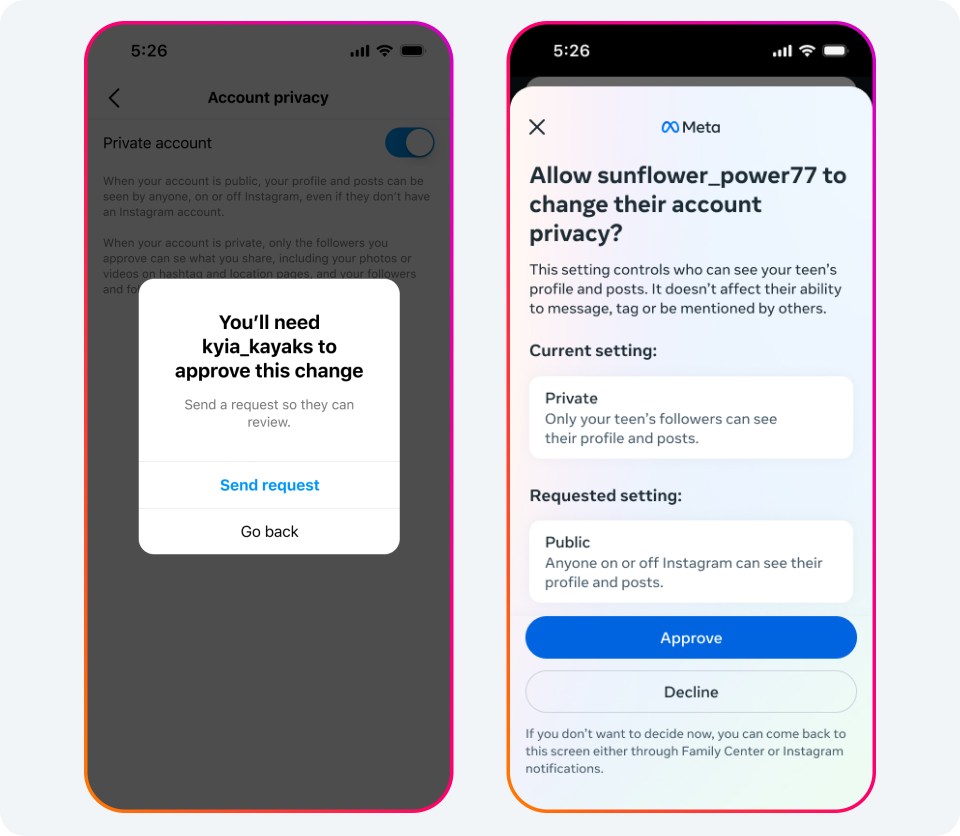We want teens to have safe, age-appropriate experiences on our apps. We’ve developed more than 30 tools and features to help support teens and their parents, and we’ve spent over a decade developing policies and technology to address content and behavior that breaks our rules.
Earlier this month, we announced new steps to further limit teens’ ability to see potentially sensitive content on Instagram and Facebook, as well as new nudges to encourage teens to close Instagram at night. Today, we’re announcing more steps to help protect teens from unwanted contact, and to make it simpler for parents to shape their teens’ online experiences.
Stricter Private Messaging Settings for Teens
To help protect teens from unwanted contact on Instagram and Messenger, we restrict adults over 18 from starting private chats with teens they’re not connected to. We also limit the message requests people can send to someone who doesn’t follow or isn’t already connected to them, to text-only messages. People can’t send images, videos, or voice notes in message requests until the recipient accepts the request to chat. (Updated on August 9, 2024 at 8:50AM PT and November 25, 2024 at 2:20PM PT to reflect our latest policies.)
Today we’re announcing an additional step to help protect teens from unwanted contact by turning off their ability to receive DMs from anyone they don’t follow or aren’t connected to on Instagram – including other teens – by default.
Under this new default setting, teens can only be messaged or added to group chats by people they already follow or are connected to, helping teens and their parents feel even more confident that they won’t hear from people they don’t know in their DMs. Teens in supervised accounts will need to get their parent’s permission to change this setting (more below).
This default setting will apply to all teens under the age of 16 (or under 18 in certain countries). Those already on Instagram will see a notification at the top of their Feed letting them know we’re making these changes to their message settings.
We’re also making these changes to teens’ default settings on Messenger, where under 16s (or under 18 in certain countries) will only receive messages from Facebook friends, or people they’re connected to through phone contacts, for example.

In addition, we’re planning to launch a new feature designed to help protect teens from seeing unwanted and potentially inappropriate images in their messages from people they’re already connected to. This is meant to discourage teens from sending these types of images themselves, to create an age appropriate experience and to help prevent sextortion. We’ll have more to share on this feature, which will also work in encrypted chats, later this year.
Helping Parents Shape Their Teens’ Online Experiences
We first launched parental supervision on Instagram in March 2022 and since then have continued to add new features to help involve parents more in their teens’ online experiences. These include the ability for parents to set time limits and schedule breaks, to understand when their teen blocks or shares they’ve reported someone, and to be notified when their teen changes their settings.
Now, parents using supervision will be prompted to approve or deny their teens’ (under 16) requests to change their default safety and privacy settings to a less strict state – rather than just being notified of the change. For example, if a teen using supervision tries to change their account from private to public, change their Sensitive Content Control from “Less” to “Standard”, or – now – tries to change their DM settings to hear from people they’re not already following or connected to, their parent will receive a notification prompting them to approve or deny the request.

As with all our parental supervision tools, this new feature is intended to help facilitate offline conversations between parents and their teens, as they navigate their online lives together and decide what’s best for them and their family.
Larry Magid, CEO of ConnectSafely, said:
“Empowering parents to approve or deny requests to change their teen’s default safety and privacy settings gives parents the tools they need to help protect their teens, while at the same time respecting their teens’ privacy and ability to communicate with their friends and family.”
Visit our Family Center to learn more about the 30+ tools and features we’ve developed to support teens and families, as well as resources from experts.
